GeoEx’s Ultimate Guide to Gorilla Trekking
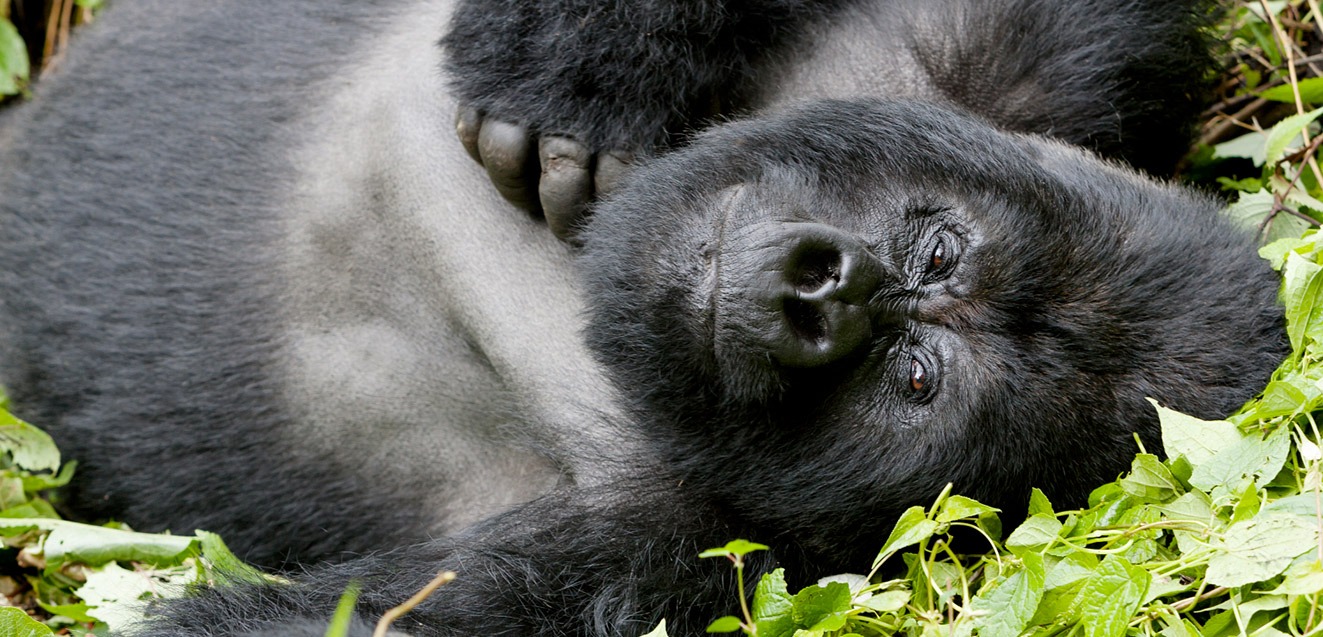
A Comparison of Gorilla Trekking Tours in Uganda, Rwanda, and the Congo
Imagine trekking through the rainforest and pulling back foliage to reveal, in breathtaking proximity, a family of gorillas. Perhaps the silverback raises his head to keep a calm, protective eye on you; perhaps a wide-eyed baby reaches a hand toward you, her other hand still clasped tightly to her mother. Encountering a family of gorillas in the wild is a travel experience worthy of its place on the bucket list.
GeoEx started arranging gorilla treks to Uganda and Rwanda in the mid-2000s. We’ve now helped hundreds of travelers—including families, honeymooners, and seniors—to see humanity’s closest cousins in the wild.
Planning a trip to see Africa’s gorillas is logistically complicated. There has never been so much choice over where, when, and how you can do it. This is a once-in-a-lifetime trip, and at GeoEx, we know how important it is to get it right, so we’ve put together a few questions for you to consider as you plan your adventure with GeoEx.
What Are the Similarities between Gorilla Trekking in Rwanda, Uganda, and the Congo?
Seeing gorillas in the wild is an unforgettable privilege no matter where you go. Travelers who have visited Rwanda, Uganda, or the Republic of the Congo—or all three—have described the experience as extraordinary, even life-changing. If you cannot trek in one country due to lack of permit or hotel availability, for example, consider the others.
In all countries, gorillas are protected and with that come a few restrictions. You’ll trek to the gorillas with a small group: up to a maximum of eight, plus your porters, trackers, and rangers, although in the Republic of the Congo your group number is often smaller. Once you sight a gorilla family, you can spend up to one magical hour with them. Trekkers must be aged 15 or older, and in all countries, you must wear a surgical mask in the presence of the gorillas to avoid spreading pathogens to them. Visitors are also asked to stay roughly 20 feet or more from the gorillas, and trekkers with cold or flu symptoms are not permitted to visit the gorillas.
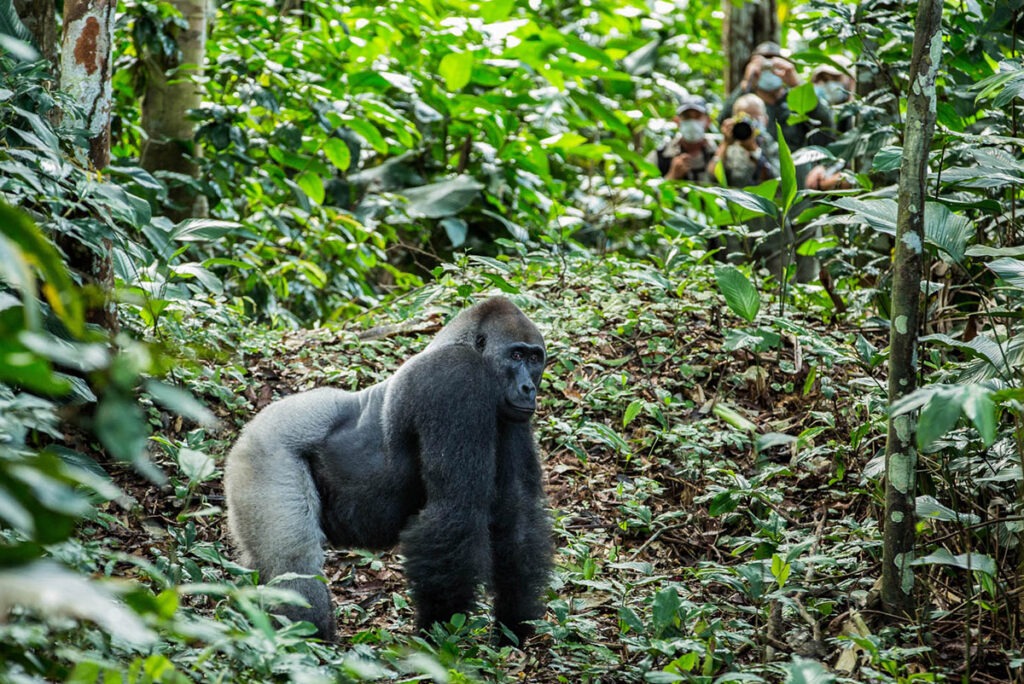
When visiting gorilla territory, prepare for a strenuous hike that involves long distances, thick vegetation, and slippery, muddy, and variable terrain. It can rain at any time of year, including months that are historically drier. There’s no set time for how long it takes to reach the gorillas: you may only hike for 45 minutes before you find them, or it may be hours.
And remember that gorilla sightings, like all wildlife encounters, can’t be guaranteed. However, sightings are extremely reliable in all three countries, and you will be guided to gorilla families that have been habituated to human presence.
| Rwanda | Uganda | Congo | |
| Gorilla species | mountain gorilla | mountain gorilla | western lowland gorilla |
| Where to spot them | Volcanoes National Park | Bwindi Impenetrable National Park | Odzala-Kokoua National Park |
| Trekking terrain | 8,500–10,000 feet Farmland and forest | 6,000–8,000 feet Forested hills | 1,600 feet average Lowland rain forest |
| Permits & limits | $1,500 pp per trek* 1 hour with gorillas | $700 pp per trek* 1 hour with gorillas** | $750 pp per trek* 1 hour with gorillas |
| Minimum trip length | 4 nights | 6 nights | 7 nights |
| Comfort level | Luxury adventure: luxury lodges, sophisticated infrastructure, moderate treks | Moderate adventure: boutique lodges, long drives, challenging treks | Remote adventure: eco-lodges, simple infrastructure, moderate-to-challenging treks |
| Other adventures | Cultural experiences, chimpanzee trekking, traditional safari | Tree-climbing lions, chimpanzee trekking, birding, cultural experiences | Rain forest wildlife, kayaking, bai walks, boat trips |
**GeoEx can arrange a special gorilla habituation experience allowing up to 4 hours, see below.
Which Species of Gorilla Can I See?
Both mountain and western lowland gorillas live in family groups, and trekkers may watch them interact, play, and go about their daily routines. Both are extremely social and intelligent.
Rwanda and Uganda: Mountain gorillas are the shaggy species that live in the high-altitude volcanic mountains and rainforests of Rwanda and Uganda. These are the gorillas that Dian Fossey studied in the 1980s. They’ve rebounded from a population low point of only 250 individuals in 1981 to a current estimate of more than 1,000 individuals. Mountain gorillas are larger than western lowland gorillas, and they mostly stay on the ground.
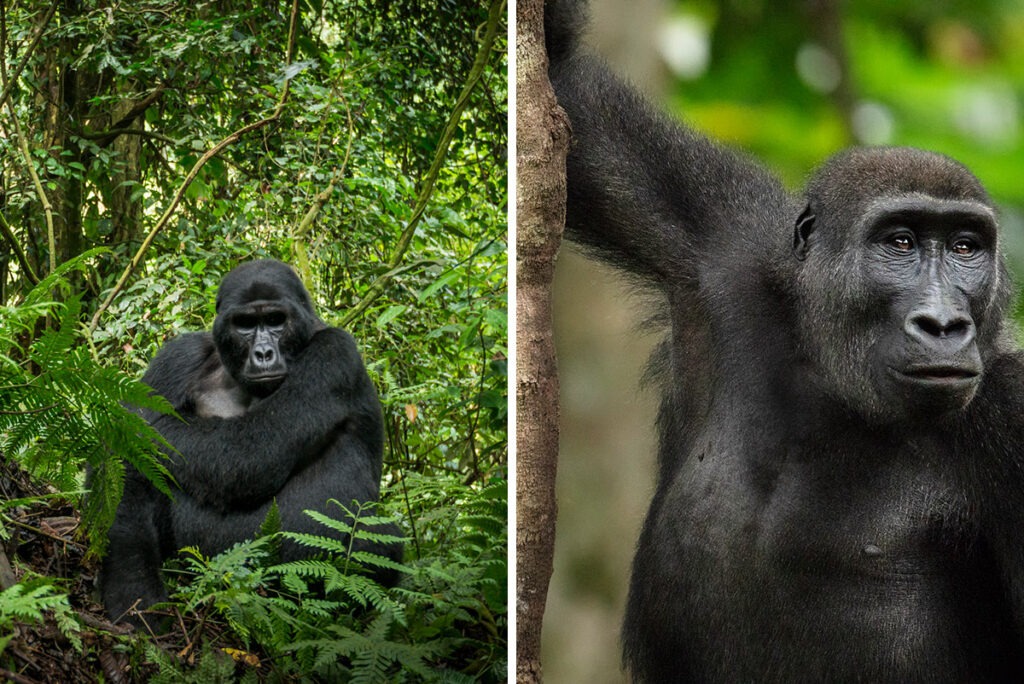
(courtesy of Odzala Discovery Camps)
The Republic of the Congo: The western lowland gorilla is a more off-the-beaten-path species to observe, mainly because the species inhabits some of the densest, most isolated forests of western and central Africa. This is the species you may have seen in zoos; the famous Koko was a western lowland gorilla. Lowland gorillas are leaner than mountain gorillas, and they are arboreal, meaning you may see them in the trees.
How Challenging Is Gorilla Trekking?
Any gorilla trekking trip is an adventure. But there are gradations of adventure in terms of how remote, rustic, and physical you want to get.
Rwanda: Often considered the “easiest” of the gorilla trekking countries, partly due to the terrain, which is steep and high altitude, Rwanda has cleared more land for agriculture, and your trek may include these human-altered landscapes. Rwanda is also considered the “easy” option due to the way gorilla treks are managed there. On the morning of your trek, your guide will negotiate with park rangers to assign you to a gorilla family whose location fits your fitness level and desires. Rwanda’s trekking typically occurs at altitudes around 8,500–10,000 feet.
Sophisticated infrastructure, good roads, and lack of litter and pollution mean this destination is favored by travelers who seek comfort. Rwanda is a small country, and the capital, Kigali, is only a three-hour drive from Volcanoes National Park (or ask us about helicopter options).
Uganda: Renowned for its challenging terrain, Uganda’s Bwindi Impenetrable National Park is aptly named. Bwindi is also famous for being one of the most gorgeous places for gorilla trekking, with its misty valleys and forested hills. Ugandan gorilla permits are associated with different trailheads that access different gorilla families, and some trailheads are steeper than others, so speak to your trip planner about your preferred level of hiking. On the morning of the trek, you drive to your assigned trailhead to begin your trek. In addition to the famously dense vegetation, altitudes range from approximately 5,000–8,000 feet.
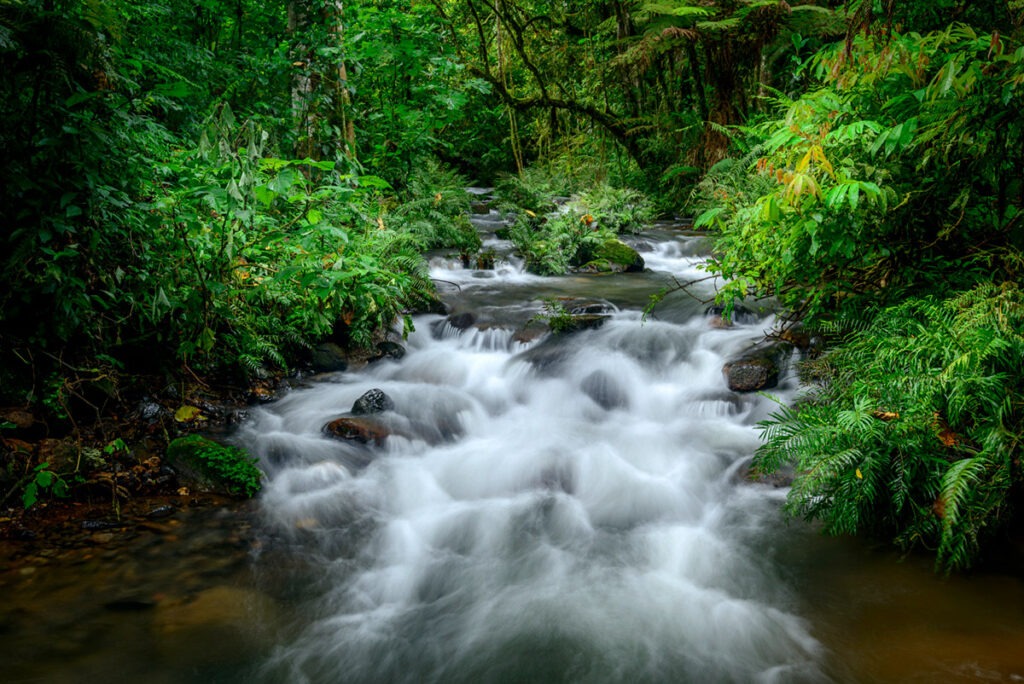
GeoEx Experience: For the truly adventurous, GeoEx can arrange a unique gorilla habituation trek. This is a full-day experience in which you’ll join the Uganda Wildlife Authority team as they habituate a new family of gorillas to humans. Once sighted, you can spend up to four hours with the gorillas. Not for the faint of heart, this hands-on experience can include miles of bushwhacking!
Uganda is a pilgrimage place for adventure travelers who don’t mind the more rugged roads and less-developed infrastructure. Uganda is larger than Rwanda, and access to Bwindi Impenetrable National Park involves a long drive or fixed-wing flight.
The Republic of the Congo: The western lowland gorilla’s name is a clue to one advantage over trekking to the mountain gorillas: there are no issues with altitude! But a trek here is still no walk in the park. The lack of altitude means you really experience the equatorial humidity. The Congo Basin rainforest is thick with marantaceae, a drooping plant that your guides and rangers may cut back with machetes. Since your camp is situated in the middle of the rain forest, treks depart right from camp or very nearby. But you may soon find yourself off-trail, crossing rivers and negotiating swamps until you find your habituated gorilla family.
The Republic of the Congo is a true adventure. Gorilla treks occur in Odzala-Kokoua National Park, a remote rain forest accessible only by a two-hour, twice-weekly light aircraft flight from Brazzaville. Roads within the park are few and unpaved, and there are no major urban areas for miles.
What Can I Do and See When I’m Not Gorilla Trekking?
Rwanda: A trip to Rwanda combines wildlife, culture, and history. The capital, Kigali, is considered one of East Africa’s most exciting cities. Travelers often begin by paying respects at Kigali’s Genocide Memorial Museum for historic perspective, then visit some of the city’s most vibrant neighborhoods to see what Rwanda is like today. GeoEx can arrange a traditional Rwandan cooking class, art gallery tours, introductions to local fashion designers, and even a visit to a traditional tailor to have a garment made.

Outside of Kigali, the highlands of Nyungwe National Park are home to a luxury hotel experience on a working tea plantation, where guests can trek to see chimpanzees and golden monkeys. Akagera National Park offers a traditional safari experience with game drives through savannah and forest on the border with Tanzania.
GeoEx Experience: At Volcanoes National Park, GeoEx can arrange for you to meet with a representative from Gorilla Doctors, a nonprofit that provides veterinary care to endangered gorillas and cares for gorilla orphans.
Uganda: Uganda is one of Africa’s adventure travel hotspots. Queen Elizabeth National Park is home to some of Africa’s most rewarding birding, best experienced on the Kazinga Channel by private boat, where aquatic wildlife-viewing may also reveal hippos and crocs. Certain regions in this massive park are home to populations of Africa’s tree-climbing lions—ask us where to spot them!
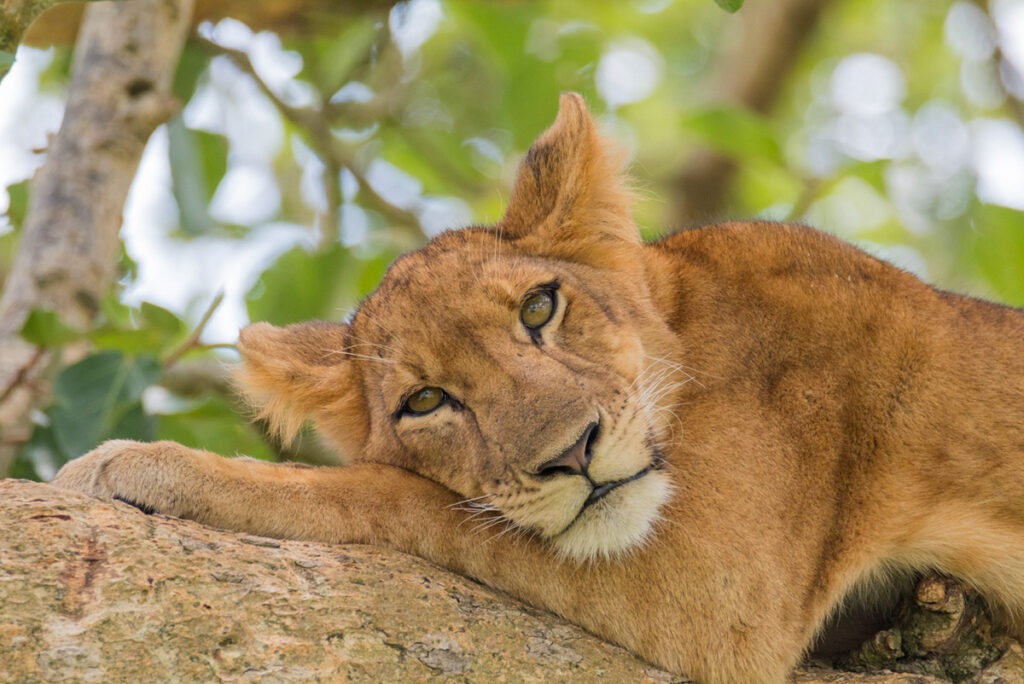
GeoEx Experience: To get more insight into Ugandan wildlife, GeoEx can arrange for guests to join a scientific researcher in Queen Elizabeth National Park to locate and record the behavior of a lion pride being studied.
At the end of the national park, the indigenous Batwa people make their home, and you can join them for an introduction to the hunter-gatherer lifestyle of the forest. Travelers to Uganda also get to experience some of the continent’s best chimpanzee trekking in Kibale Forest, home to the largest concentration of chimpanzees in East Africa as well as colobus and blue monkeys. Although the region is well off the beaten track, travelers who have visited the savannahs of Kidepo National Park, in the far north of the country, have been delighted with the charming accommodations and wild beauty of the landscape.
The Republic of the Congo: Perfect for travelers who want to go deep into Africa’s ecosystems, the Congolese forest is alive with the sounds, smells, and glimpses of millions of insect, plant, and animal species. Explore the rain forest by boat, kayak, and on foot, seeking some of the continent’s most elusive and exciting wildlife. You might spot a sitatunga splashing across a river, a bongo standing alert at the edge of a bai (clearing), or a family of forest elephants foraging right beneath your treehouse at camp. Primates abound, including guereza colobus, grey-cheeked mangabey, and De Brazza’s monkey. On past memorable journeys, GeoEx guests have even spotted unhabituated gorillas and chimpanzees—animals who may never have seen humans before!
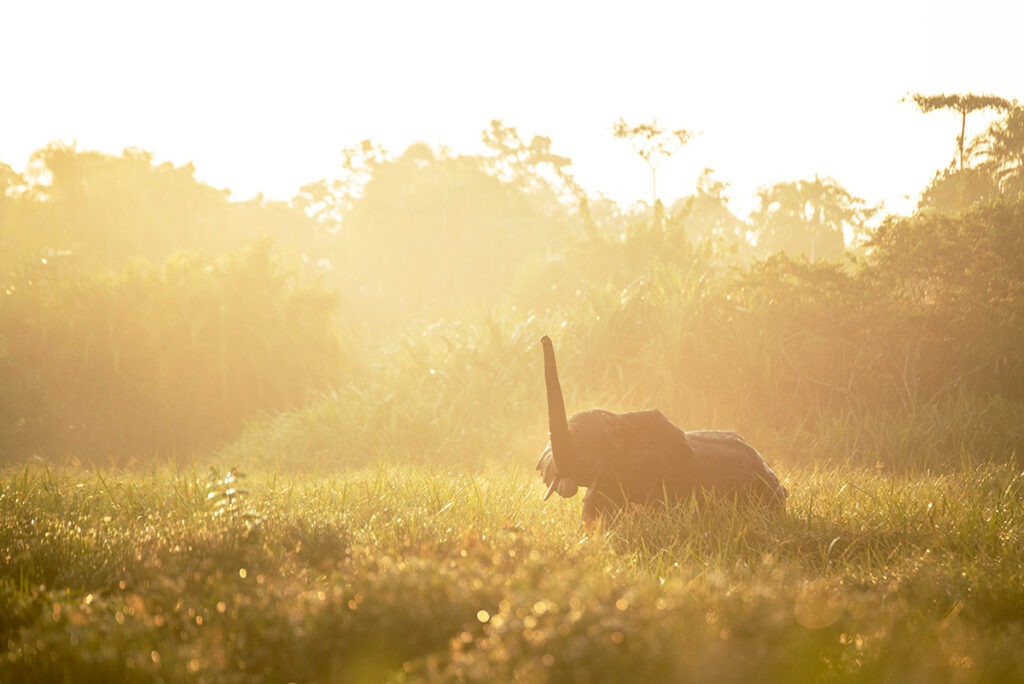
What Do I Need to Know about Gorilla Permits?
In all destinations, gorilla permits are limited and book up quickly, sometimes years in advance. We recommend you plan your gorilla trek as early as possible to avoid disappointment.
Rwanda: The government of Rwanda’s commitment to high-impact, low-volume tourism includes strictly limiting the number of gorilla trekking permits issued both by quantity available and by price. Currently $1,500 per person per trek, Rwanda’s permit pricing is the highest on the continent.
Uganda: Gorilla trekking permits in Uganda are more plentiful and currently less than half the cost of permits in Rwanda at $700 per person per trek, making it a popular destination for more cost-conscious travelers.
The Republic of the Congo: Partially due to limited access in remote areas, Congo issues the fewest daily gorilla trekking permits. The rate is $750 per person per trek, but note that the logistics required to access this remote area can offset the relative affordability of the permits.
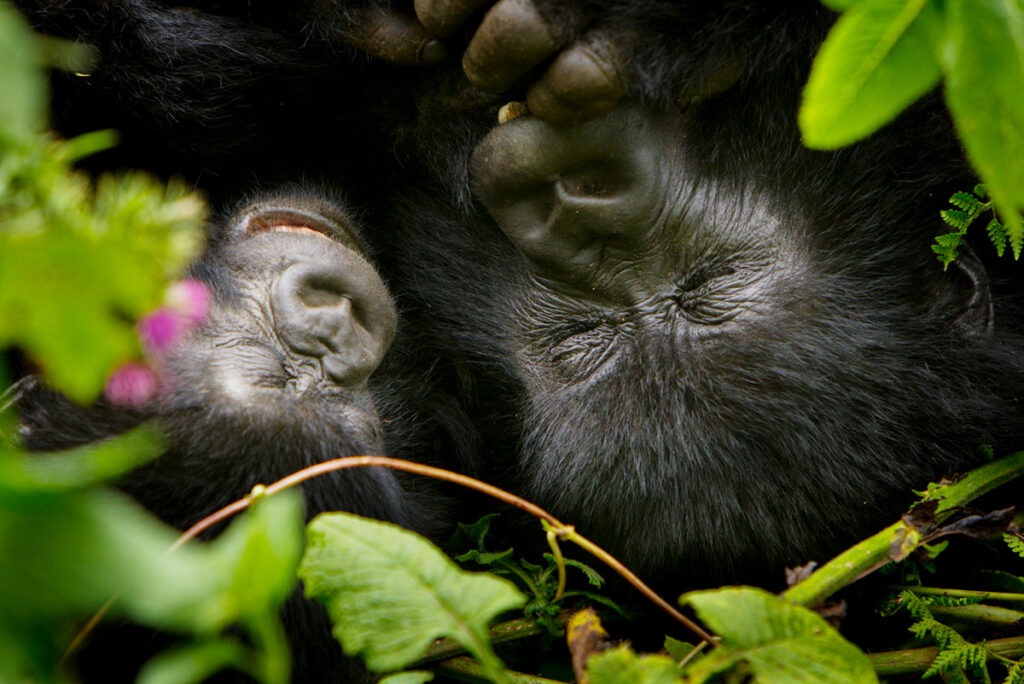
What Is the Accommodation Like for Gorilla Treks?
The good news is that there are a range of options among Rwanda, Uganda, and the Congo, depending on your desires and budget. Because availability for gorilla permits and accommodation can be tight, speak with your trip planner about the perfect combination of trekking destination and accommodation to ensure you have the right balance between adventure and luxury.
GeoEx staff have vetted the best camps and lodges in each destination (and in the case of the Republic of the Congo, we’ve watched the camps grow from the very beginning!).
Rwanda: The gorilla-trekking lodges in Rwanda include some of the most luxurious accommodations on the continent. Most can be reached by vehicle, fixed-wing aircraft, or private helicopter.
Bisate Lodge has just six villas designed to resemble gorilla’s nests (but rather more luxurious); One&Only Gorilla’s Nest blends modern decor at eye-level with eucalyptus trees; and Singita Kwitonda, part of the Singita luxury portfolio, overlooks three volcanoes. Sabyinyo Silverback Lodge, a mainstay in the Volcanoes region, is owned by the Sabyinyo Community Livelihood Association, and guests may visit the community’s projects.
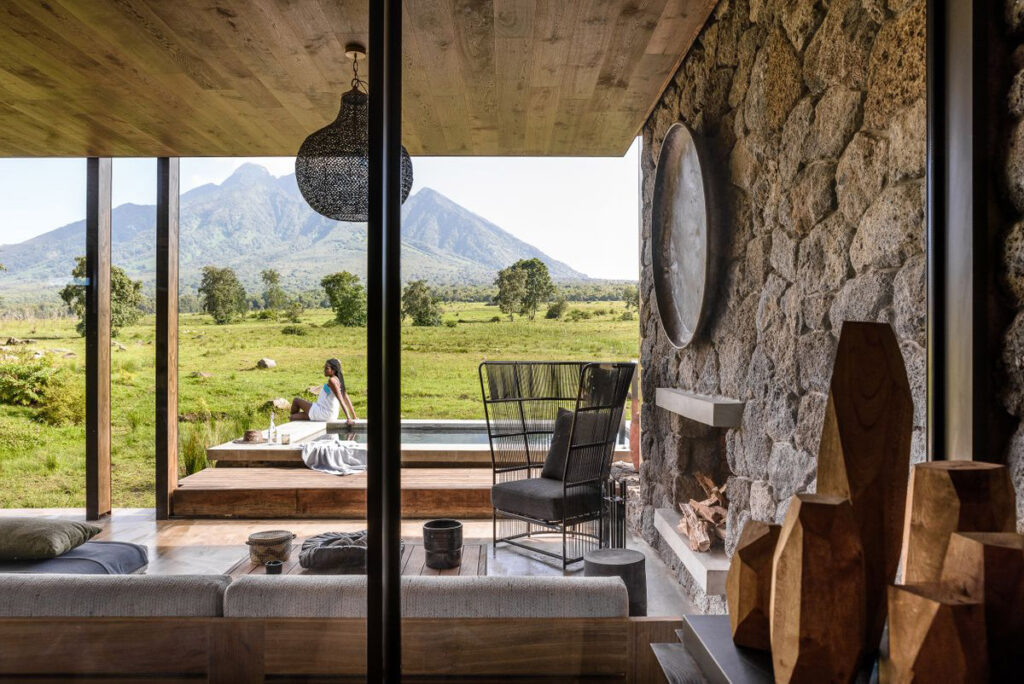
GeoEx Tip: Ask your trip planner about the best rooms for you in each lodge, as you may find yourself climbing some of Rwanda’s famous hills to get to dinner.
Uganda: Because of its history as an adventure haven, Uganda’s lodges suit a range of gorilla-trekking travelers from rustic to high-end.
Sanctuary Gorilla Forest Camp brings a tented camp style to the rain forest, and the property is situated at the edge of a gorilla family’s territory, meaning gorillas sometimes amble right into camp. Volcanoes Bwindi Lodge includes just eight bandas, each named after a Bwindi gorilla, and boasts some of the region’s best views. The Bwindi community hospital is within walking distance, and GeoEx guests have been fortunate to meet some of the incredible staff who are committed to medical care in the area.
The Republic of the Congo: Travelers to the remote Odzala-Kokoua National Park will find just three sister eco-lodges in the entire landscape: Ngaga, Lango, and Mboko. These are the home bases for your daily adventures, and the guides and staff form your tight-knit community. The camps have remarkable comfort given the remoteness of their location. All have hot and cold running water, flush toilets, and electrical sockets. Don’t forget that you, too, are now a temporary resident of the rain forest along with all its creatures, and may hear your primate, avian, and insect neighbors into the night and early morning!
Can I Do Gorilla Trekking as Part of a Longer Trip?
It’s common to combine Rwanda and Uganda with a safari in other East African countries. Kenya and Tanzania’s Great Migration, Serengeti, Ngorongoro Crater, and Maasai Mara are all right next door.
Rwanda: With the smallest spatial area and the most developed infrastructure, Rwanda is the easiest country to visit quickly, making a gorilla trek here a feasible four-night extension to other countries in East Africa.
Uganda: While Uganda can technically be visited in four nights as well, its longer distances—to say nothing of its landscapes and safari parks—do merit a more prolonged time investment.
The Republic of the Congo: A visit to Odzala National Park is the most logistically complex option for gorilla trekking. International flights to Brazzaville must be timed to match with light aircraft flights into Odzala, and trips to this region are rarely fewer than seven nights. Daily flights between Brazzaville and Johannesburg make South Africa an excellent match for a luxurious combination with the Republic of the Congo.
* * * * *
By now, you likely have a good idea of the differences between Rwanda, Uganda, and the Congo for gorilla trekking, and you are a step closer to planning an exciting adventure. GeoEx’s experienced planners can help you obtain permits and choose the suitable accommodation. We can also arrange some of the extraordinary experiences mentioned above to give you a deeper connection to the destination. If you’re ready to talk about gorillas and plan your trip, call our travel experts at 888-570-7108 or inquire online.

